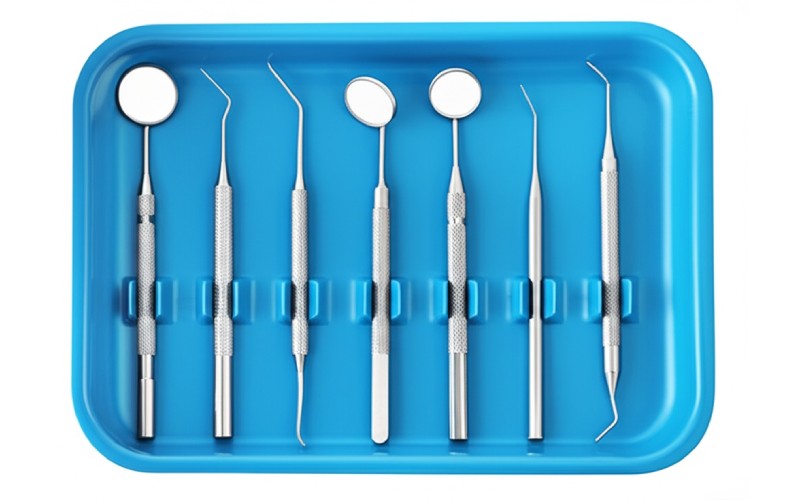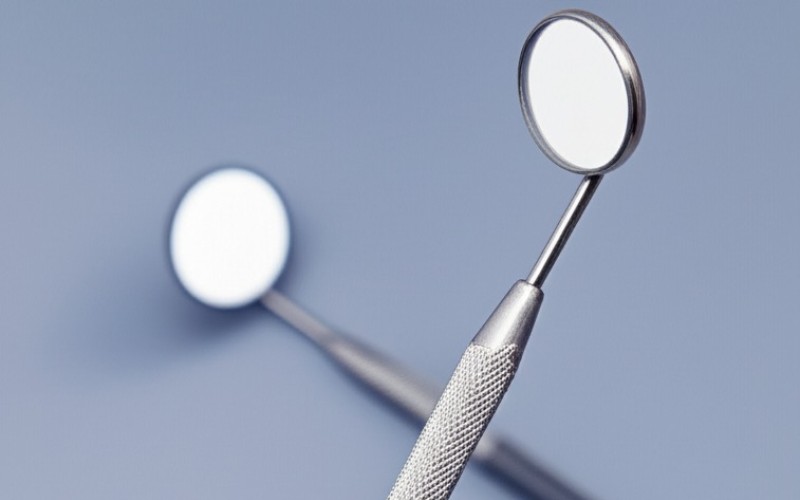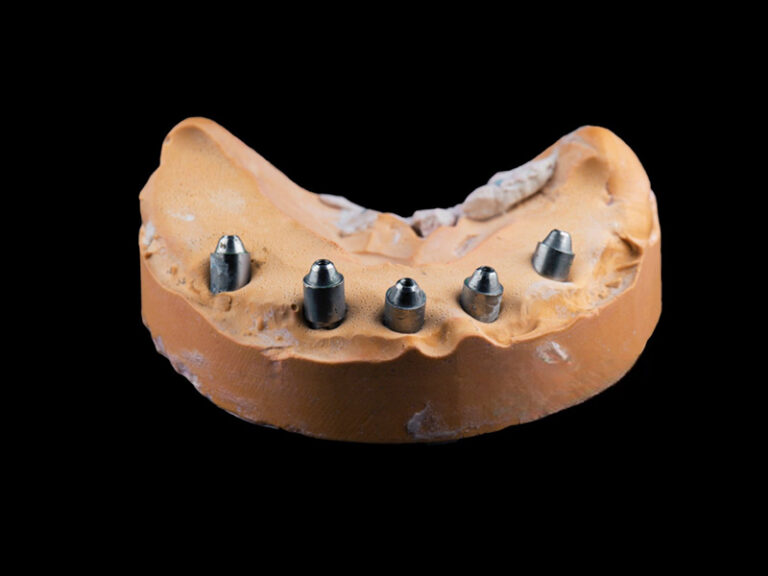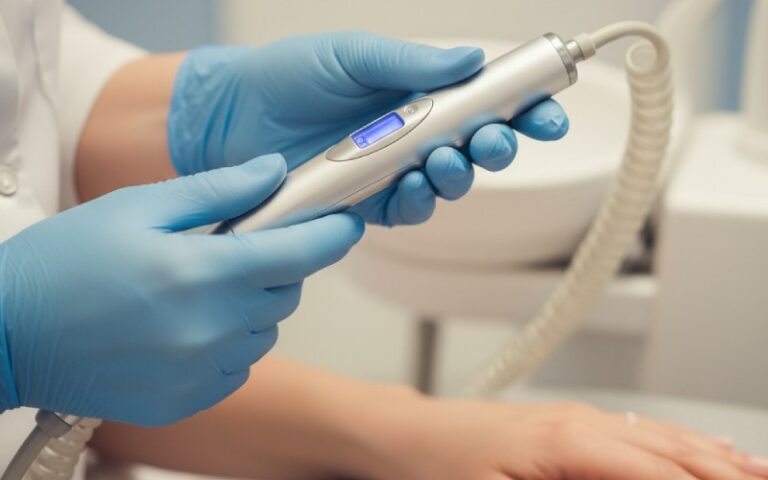
A Guide to Choosing the Right Dental Mirror: Everything You Need to Know
Choosing the right dental mirror might seem like a small choice. But a great dental mirror helps you see clearly, work faster, and provide the best care for your patients. This guide to dental mirrors will show you everything you need to know to pick the best dental mirror. It will help you understand the small details that make a big impact on your daily work.
Table of Contents
Why Is a Good Dental Mirror So Important in Dentistry?
The simplest tools often have the biggest impact. In dentistry, the dental mirror is one of those tools. It does more than just show you a reflection. Mouth mirrors are like a dentist’s second set of eyes. They let you see the hidden areas of the mouth that you could not see otherwise. This helps you find problems like a small cavity before it gets big.
Think about it. Without a clear view, a dental professional is working in the dark. A poor-quality dental mirror can give you a blurry or dark image. This can cause you to miss things. It can also make your job harder and more tiring. A good dental mirror, on the other hand, gives you a bright, clear view. This makes your work more accurate and efficient. It is a key part of the dental toolkit for any serious dental professional. These mirrors are like the unsung heroes of every dental exam.
What Are the Different Types of Dental Mirrors?
When it comes to choosing a dental mirror, you first need to know the basic types. Understanding the different types of mirrors is the first step. The most common types of dental mirrors are rear-surface, front surface, and concave mirrors. Rear-surface mirrors, or standard mirrors, have the reflective coating on the back of the glass. They are cheap but can create a “ghost” image, which can be confusing.
For a much clearer view, you want front surface mirrors. These have the coating on the top of the glass. This gets rid of the double image and gives you a very sharp reflection. Then there are concave mirrors, which make the image look bigger. This can be helpful for seeing tiny details. Some special mirrors are also a double-sided mirror, which is useful for retracting the cheek and seeing at the same time. The type that best meets your needs will depend on the kind of dental work you do most often.

Why Does the Reflective Coating Matter So Much?
The reflective surface of a dental mirror is everything. The type of coating on the mirror directly affects how bright and clear the image is. Most high-quality dental mirrors are made with a special coating of rhodium or titanium. Rhodium is a precious metal that is very resistant to scratches and damage from cleaning. It gives a very sharp and clear image. A coating of rhodium makes the mirror last a long time.
A titanium coating is another great choice. It is also very strong and provides excellent reflection. The right coating makes a huge difference in the durability and performance of your dental mirror. Cheaper mirrors might use a simple chrome coating, but this can scratch easily and wear off over time. When you invest in a better coating, you invest in better vision for your dental practice. It’s a small detail that makes a big difference in quality.
How Do I Choose the Right Size Mirror Head?
The size of the mirror head is another important thing to think about. Dental mirrors come in different sizes, usually numbered from 0 to 5. The size you choose depends on what you need to do. Smaller mirrors, like a size 0 or 1, are good for getting into tight spaces, especially with children or patients with small mouths. They help you see behind the back molars without causing discomfort.
Larger mirrors, like a size 4 or 5, give you a wider view. They are great for retracting the tongue or cheek to keep it out of your way. A larger mirror head also reflects more light, which can help brighten up the work area. Many dental pros keep a few different sizes on hand. This lets them pick the perfect tool for each patient and each procedure. Using a mirror of the correct size improves both your view and your patient’s comfort.
Does the Mirror Handle Really Make a Difference?
A good handle matters. Whether it’s a pen or a tool, how it feels in your hand affects your work. The same is true for a dental mirror. A good handle should be comfortable to hold for a long time. This is where an ergonomic design comes in. An ergonomic handle reduces stress on your hand and wrist. This helps you stay focused and comfortable during long dental procedures.
Handles are often made from stainless steel for its durability and because it is easy to clean. Some have a hollow design to be lighter. Others have a textured grip so they don’t slip from your fingers. An ergonomic handle might seem like a small thing, but it helps you have better control. This leads to more precise work and better patient care. Choosing the material of the mirror handle is just as important as choosing the mirror itself.
What is a Cone Socket and Why Should I Care?
Now, let’s talk about a term you might see: cone socket. This might sound technical, but it’s very simple. The cone socket is the threaded part of the dental mirror handle where the mirror head screws in. It’s the connection that holds the two pieces together. Most dental instruments in the U.S. use a cone socket design. This means you can easily replace the mirror head when it gets scratched or damaged, without having to buy a whole new handle.
This feature is great for saving money and being flexible. You can have one set of handles and many different types of mirror heads. You can find dental mirrors tops cone socket designs very easily. For instance, you might see a “Tops cone socket front surface rhodium set”. This just means you get a handle and a high-quality mirror head that can be screwed together. The cone socket is a smart design that makes your dental tools more versatile.

Should My Practice Use Reusable or Disposable Dental Mirrors?
This is a big question for any dental practice. Should you use reusable or disposable dental mirrors? Reusable mirrors are often higher quality. They are usually made of stainless steel and have a superior coating, like rhodium. They offer better durability and a clearer reflection. But, you have to clean and sterilize them after every use, which takes time and effort.
On the other hand, disposable dental mirrors are very convenient. You use them once and then throw them away. This saves time on cleaning. They are also great for reducing the risk of cross-contamination. However, they are often made of plastic and may not offer the same high-quality image as a good reusable mirror. The choice depends on your practice’s needs. Some offices use reusable mirrors for most work and keep disposables for specific situations.
How Does a Good Dental Mirror Improve Patient Care?
At the end of the day, everything we do in dentistry is about providing the best care for our patients. A high-quality dental mirror plays a big role in this. When you can see every corner of the mouth clearly, you can do a better job. A clear view from a front-surface mirror helps you spot early signs of a cavity or gum disease. Finding these problems early makes treatment easier and more successful.
A good dental mirror also improves the patient experience. For example, using the right size mirror to gently move the tongue or cheek is much more comfortable for the patient. Efficient dental care means less time in the chair for them. When you work with precision, you are giving the best care possible. Good dental tools are an investment in your patients’ dental health. A better mirror can make all the difference.
What is the Best Way to Maintain My Dental Mirrors?
If you invest in good, reusable dental mirrors, you need to take care of them. Keeping your mouth mirrors in top shape starts with proper cleaning. After each use, you must clean and sterilize your mirrors. Be careful not to use harsh cleaners that could damage the reflective coating. Scratches on the mirror surface will ruin the clear image you need.
Always follow the maker’s instructions for cleaning. Avoid throwing your mirrors into a tray with other sharp dental instruments, as this can cause scratches. Check your mirrors often for any signs of wear. If a mirror becomes scratched or the image is no longer clear, it is time to replace the mirror head. Proper maintenance of dental mirrors ensures they last a long time and continue to provide a perfect reflection for every dental examination.
How Do I Finally Choose the Right Dental Mirror for My Practice?
So, how do you put this all together and choose the best one? Choosing the right dental mirror comes down to thinking about your needs. First, decide between rear-surface, front surface, and concave mirrors. For the best clarity, front-surface mirrors are the top choice for most dental practitioners. Next, think about the coating. A rhodium coating offers great image quality and durability.
Then, select the best size and handle. Have a few different sizes of mirror heads available. Choose an ergonomic handle that feels good in your hand. Look for the cone socket design so you can easily change heads. Finally, decide if reusable or disposable mirrors work best for your office flow. By thinking about these points, you can confidently choose the right dental mirror for your practice and improve the quality of your dental care. The right dental mouth mirror might be the best small investment you make.




